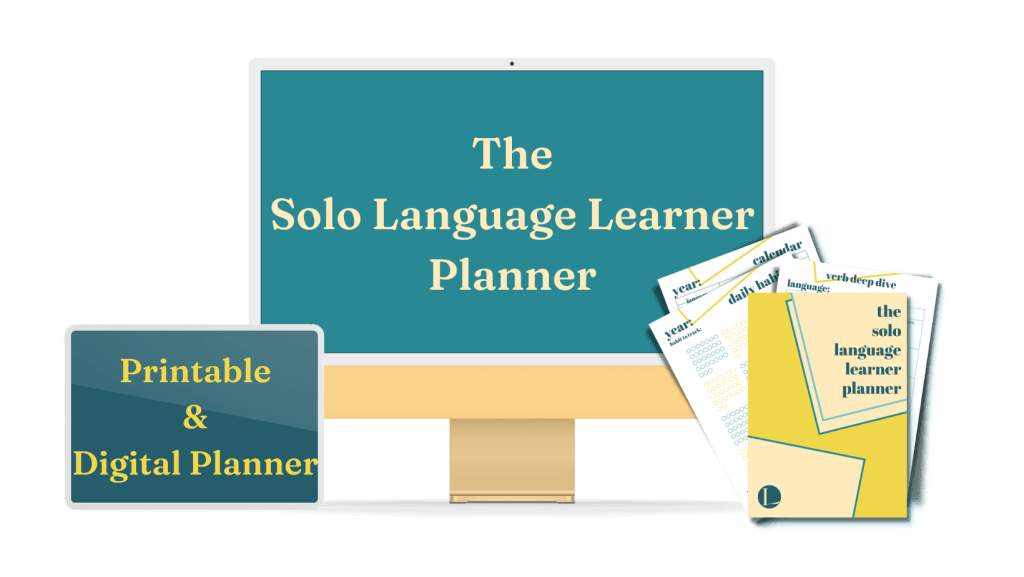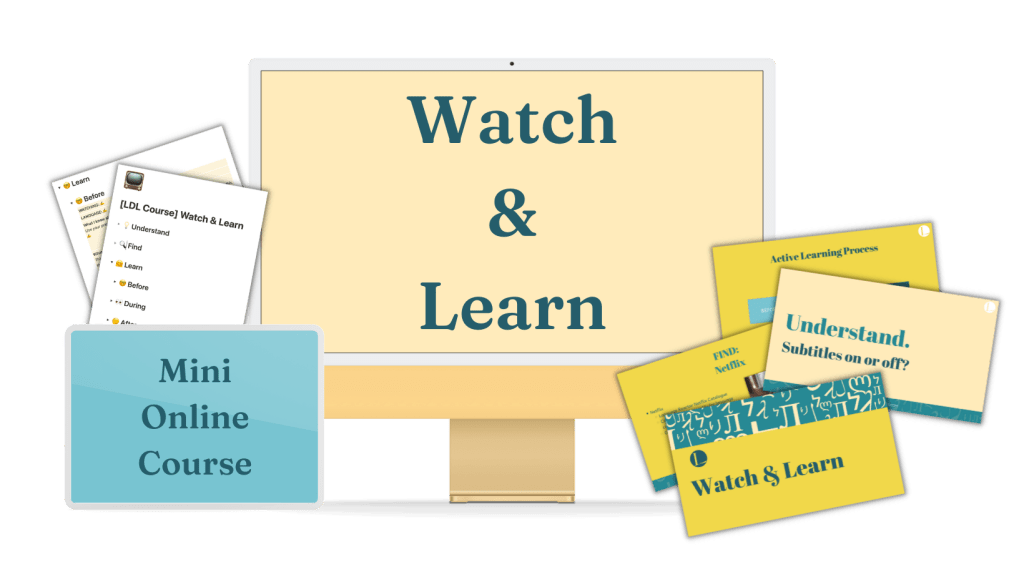My Top Learn Japanese Resources: Apps, Books & More for Every Learner
Learning Japanese can be an exciting endeavor, but it can be overwhelming when there are tons of learn Japanese resources out there to choose from.
So, which one should you pick to truly make progress, especially when attending formal Japanese classes isn’t an option for you, or you simply don’t have time for that even if it’s accessible?
If you’re not sure which ones will genuinely help you on your journey, then you can have a look at the learn Japanese resources that I use personally.
And the best part of all? You can use them even if you’re more on the intermediate and advanced level, not just the absolute beginner.
Disclaimer: This page contains affiliate links. If you purchase through these links, I may earn a commission at no extra cost to you. I only recommend products

Build a strong base through structured lessons with JapanesePod101.com
If you’re looking for a foundational, comprehensive Japanese resource, then you can’t go wrong with JapanesePod101.com. It’s a platform that allows you to learn Japanese online through video or audio lessons for all levels.
Whether you’re an absolute beginner or an advanced learner, there will always be lessons that are catered to your desired level and your learning style.
What I love about JapanesePod101.com is that not only does each lesson come with a line-by-line transcript, lesson notes, and a kanji worksheet. It also provides other tools that can help you with learning Japanese, such as:
- Spaced repetition flashcards to improve your memory
- Multiple-choice assessments after each lesson
- A grammar bank for detailed grammar items
- Kanji study tools such as Kanji close-up, Kanji bank, Kanji dictionary, and Kana quizzes for mastering Japanese characters
Do you need someone to come up with a customized lesson plan just for you? Their Premium PLUS subscription comes with access to your own teacher.
Of course, you can sign up for free just to see what JapanesePod101.com has in store for you. But I do recommend that you upgrade to their Premium subscription to unlock all lessons and their premium learning tools.
The good news is that JapanesePod101.com tends to run special promotions from time to time. If you’re thinking about signing up with JapanesePod101.com, I highly recommend that you have a look at my Anime Deals post for their limited-time-only deals.

Deepen your learning through books, manga & more with CDJapan
What’s the most fun way to practice what you learn? It’s immersing yourself in fun content in Japanese, of course!
Whether you’re thinking about wanting to practice reading using manga or test your Japanese understanding through music and movies, CDJapan has got you covered.
It has everything Japanese you can think of, from Japanese movies, music, anime Blu-ray, manga, video games, to Japanese textbooks such as Genki and Minna no Nihongo.
Even better? They’re all shipped directly from Japan, with many different shipping options to choose from.
That’s where I got my Genki textbook and also my manga, anime, and video game merchandise, and my Plastic Tree CDs, in case you’re wondering.
If you’re not a fan of subscriptions, the Genki textbook is a good place to start. But I do recommend that you get the accompanying workbook as well for the Japanese writing practice.

Stay organized and motivated with The Solo Language Learner Planner by Lindsay Does Languages
If you’re into bullet journaling, you may feel that having a separate planner dedicated to language learning is unnecessary, as you can do the same in your bullet journal.
That was what I thought, too, at first, until I realized that I know nothing about language learning planning.
This is when The Solo Language Learner Planner by Lindsay Does Languages comes into play.
On the surface, it is what you expect a planner to have – the annual and monthly calendar, weekly overview, language goal-setting worksheet, daily planner, and habit tracker.
But what sets this planner apart is that it has a dedicated section where you can map out your plan to learn the language, and a review section to see whether you manage to achieve your goal in learning the language.
If you’ve bought so many books and courses, use this section of the planner to take note of what you have and plan accordingly how you can make full use of what you have.
Do you have a speaking practice with a teacher on a regular basis? There’s a dedicated planner just for that, too.
And if you’re like me, who happens to learn random words and phrases while watching your favorite shows, there’s a worksheet that allows you to record those random words and phrases.
The planner can feel overwhelming at first since it covers many different approaches to language learning. So, Lindsay suggests you only pick whichever section of the planner applies to you.

Learn Japanese through anime, dramas, and movies with the Watch & Learn course
Learning random words and phrases is all good. But we all know it may not lead us to mastering the language.
What if there’s a way to make the relaxing session into an active learning process?
That’s when the Watch & Learn course comes in handy, where you learn how you can use that binge-watching moment into a fun learning session.
Should you turn on or off the subtitles when you watch the show?
How can you listen to the words effectively while watching?
This course has got you covered.
Now you can give yourself an excuse to binge-watch those anime and J-dramas that you stumble upon on Netflix.
Of course, those binge-watching sessions are less effective if you don’t record what you learn.
So, my recommendation is to pair this course with The Solo Language Learner Planner. I recommend that you have the Japanese dictionary on hand as well, so that you know what those words and phrases are in Kanji.
That’s what I did whenever I came across random words and phrases during my anime watching session.
You’ll learn just as much as you’re going through the lessons on JapanesePod101.com and the Genki textbook.
How to choose the right Japanese learning resources
Auditory, visual, kinesthetic. We all know that everyone has a different learning style. So, which of these Japanese learning resources will suit your learning approach?
Here are my suggestions on how to find the learning resources that fit you.
For visual and auditory learners
If you’re someone who is a visual learner or prefers to consume the lesson on the go, then JapanesePod101.com certainly works best for you.
Not only does each lesson come with a video lesson, but it also comes with an audio lesson, which you can access through the JapanesePod101.com app. You can then refer to the lesson notes for revision and complete the Kanji worksheet for Japanese writing practice.
For budget-conscious learners and textbook lovers
Do you find the monthly or annual subscription is a bit of a stretch for you?
If that’s you, then getting the Japanese textbooks like Genki from CDJapan is a good option for you.
You can also get the Genki app to complement the lessons from the textbook. But they’re paid apps and will work best if you have the latest edition of the Genki textbook, though.
I can’t say much about the Genki app since I’ve never used it. All I can say is to make sure that you’ll get the Genki app that matches your textbook edition for the smoothest learning experience.
If you’re thinking about getting the Genki textbook, I highly recommend that you get the workbook as well for the writing practice and effective vocabulary and phrases memorization.
For those who are traveling to Japan
While these resources are perfect for those who want to be fluent in Japanese, they can be a little too much if you only want handy phrases that you can use when you travel to Japan.
So, what should you get if you only need key phrases?
Well, you can get the Japanese phrases book in the bookstore if you’d like. But you can get the basic phrases at JapanesePod101.com as well, which is free on their website. You don’t need a paid subscription to access the Japanese key phrases.
For those who are studying for the JLPT
I can’t recommend any specific books for JLPT since I’m not taking JLPT. But generally, I recommend getting the textbook and the practice exam book tailored to your JLPT level.
If you’re taking the JLPT N5 exam, then get the JLPT N5 textbook and the practice exam book, which you can get at CDJapan.
JapanesePod101.com also has a dedicated section for the JLPT, where it has JLPT practice tests to help you prepare for the real thing. It also has a JLPT Kanji quiz to help you study the Kanji covered for the test. But you will need a paid subscription to access the JLPT section on JapanesePod101.com, though.
A must-have for all learners
Regardless of how you choose to learn Japanese, I highly recommend that you get The Solo Language Learner Planner to plan and keep track of your learning progress.
Frequently Asked Questions (FAQs)
Can I learn Japanese for free?
Yes, you can. While the free account on JapanesePod101.com has limited access to the lessons you can take, it also provides many free resources you can use, such as:
- Vocabulary list, a list of Japanese words and phrases you can learn, categorized by situations and events
- Word of the Day, a multiple-choice quiz to test your vocabulary
- An online Japanese dictionary where you can search the words in English, Romanji, Kana, and Kanji
- 100 most common words
- Japanese key phrases that are useful while you’re in Japan
Apart from these resources, you’ll also get email-subscribers-only resources where you can get phrase lists and writing worksheets in PDF.
Want to practice speaking Japanese? You can use chatbots like ChatGPT and Gemini as virtual conversation partners to help you with sentence structure, pronunciation and even role-playing.
Of course, there are tons of Japanese lessons on YouTube and Japanese lesson podcasts out there.
It’s certainly an unstructured learning process, but you can make all these free resources work for you with a little creativity.
What's the best way to learn Japanese on my own?
The best way to learn Japanese on your own is to identify your learning style and find resources that not only work best for you but also align with your time commitment.
This can also mean that you may have to try everything until you find the one that works best for you.
Alternatively, you can also take Lindsay Does Languages’ Successful Self-Study course, which teaches you how to learn any language on your own.
Just to be clear that I’ve never taken this course before. But it’s worth noting if you need help with providing the language learning framework that works for you.
Do I need to learn Kanji?
Yes, learning Kanji is essential since the Japanese writing consists of Hiragana, Katakana, and Kanji. The good news is that learning Kanji will become easier to tackle once you master Hiragana. You can easily find the words in the dictionary in Kanji, if any, when you know the words in Hiragana.
How often should I study Japanese?
There are no specific rules on how often you should study Japanese, since it depends on your goal and your time commitment. If you’re studying for the JLPT, then a more structured and consistent dedication of your time is necessary, especially when your exam day is approaching.
But if you’re learning Japanese in the hope of becoming fluent in it someday, then you need to find the learning schedule that you can sustain, be it the short daily sessions or longer weekly blocks.
My suggestion is to find the time and frequency that works for you and incorporate a variety of learning methods.
For example, you can dedicate an hour or so to complete one lesson on JapanesePod101.com per week and then implement the method you learn in the Watch & Learn course when you’re watching a Japanese show.
The key here is to find the learning process that works for you. After all, learning a language is a marathon, not a sprint.
Your journey to learning Japanese starts today!
Learning Japanese doesn’t have to feel like rocket science when you have these resources at your disposal. You can choose to learn the language in a structured framework. Or you can learn the language in a more relaxing way.
Do you need to get every single thing I recommend here?
Of course, the answer is no. Just get what you deem necessary.
After all, this page covers many different ways of learning Japanese that suit your learning style and schedule. You don’t have to get all of them unless you’re sure that you need them.
Like any other resource page, nothing is set in stone. So, I do recommend that you check this page from time to time, if I add another resource you should be aware of, or a new section on this page.
That’s my commitment to helping you get started with learning Japanese.
Just remember that Rome wasn’t built in a day. And so does your Japanese fluency. Keep going, and you will be fluent in Japanese someday.
